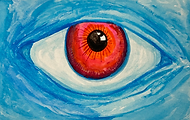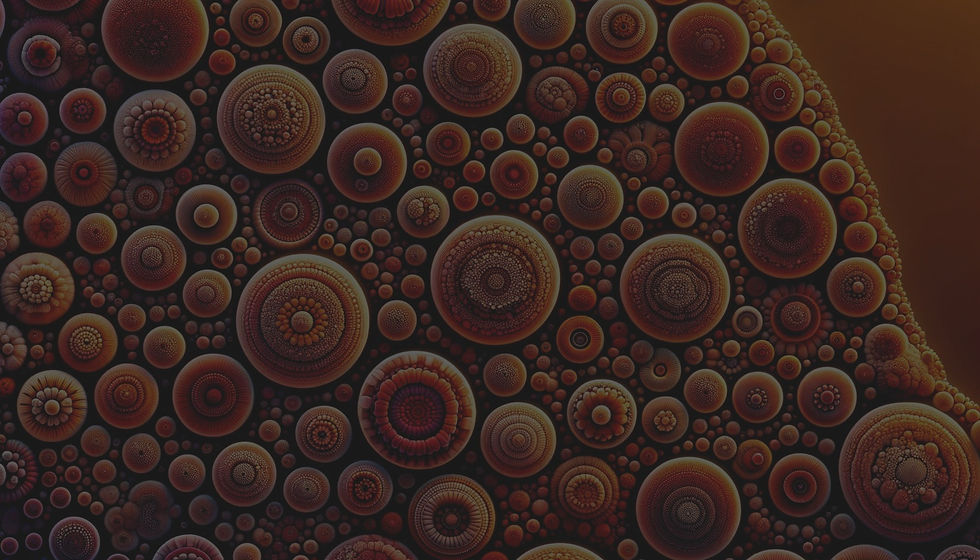
The Psychedelic Yoga Research Collective
To develop yogic methods supporting psychedelic use for healing, creativity, and spiritual growth.
What is the PYRC?

The Psychedelic Yoga Research Collective is a group of yogis, psychonauts, and healers, who work collaboratively to develop methods supporting the use of psychedelics for healing, creativity, and spiritual progress.
The Terms
Psychedelic
A "mind-manifesting" substance. A substance that alters consciousness without diminishing it. By altering consciousness without diminishing it, psychedelics restore a state that could be termed "Child's Mind," where learning and creativity are enhanced.
Examples include LSD and psilocybin mushrooms ("classic" psychedelics), DMT, Ayahuasca, 5 meo DMT, Salvia Divinorum and ketamine.
According to some, a "Psychedelic Renaissance" is underway, as research resumes that was aborted by the War on Drugs, and the manifold possibilities of these substances for mental-health, spirituality, and creativity are explored with renewed vigor.
Yoga
A practice or collection of practices to "unite" body, breath, and mind. -- And to "unite" the individual practitioner with their "true nature" (the Divine, Universal Love, the Self, etc.).
A "technology" of the human body-mind. Methods that are time-tested and experience-based, yet may reside outside the domain of scientific inquiry.
This approach to yoga:
-- Begins with the assumption that traditional practices contain deep wisdom about the human body-mind. This wisdom may not be scientifically explainable in the present but probably has a scientific basis.
-- Begins with the assumption that some specific aspects of traditional practice are arbitrary.
For example, the practice of Chakra Yoga focuses on places in the body where "energy" (related to emotions) is perceived and in some cases "stored." These locations may be connected to the endocrine system and certainly correspond to systems in the brain related to memory and emotions. But the association of specific colors with specific chakras is most likely arbitrary, since different chakra systems in different schools of yoga have different color-chakra associations.
Another example is the visualization of the Tibetan letter "Ah" at the throat chakra in Tibetan Dream Yoga. Visualizing a letter engages parts of the brain associated with written language, while the throat chakra is important for social expression, which is often a focus of REM dreams. But the letter does not have to be an "Ah." Tenzin Wangyal suggests American practitioners use the letter "A" instead.
Because the "true self" is a universal entity, the goal of yoga can also be expressed in terms of reducing the suffering of other conscious beings.
Research
Processes to develop unique and effective methods, integrating yogic practices into psychedelic states, through experimentation and discussion.
Our research methods will:
-- Rely more on intuition and less on rigor, than the scientific method.
-- Avoid biases associated with non-scientific approaches, through incisive discussion and skepticism.
-- Be oriented toward speedy and useful results (in the areas of wellbeing, creativity, and spiritual progress) rather than tight, scientific conclusions.
-- Be more open to conjectures that are not accessible with current scientific apparatus.
An inspiration is Tibetan Dream Yoga. This ancient practice was developed by yogis who passed on knowledge and direct experiences through the generations. While the scientific basis of many aspects of the practice is unknown, it cannot be denied that Tibetan Dream Yoga is astonishingly effective. If your goal was to achieve lucidity in your dreams, the wisdom of Tibetan Dream Yoga will be far more useful than brain scans and neuroscientific theory.
Collective
All participants have a fundamental right to be heard, to create, and to contribute work.
Research projects will be conducted by:
-- Individuals. One person exploring a topic in depth.
-- Small groups. Deep collaboration of several folks toward a shared goal.
-- Full community. Everyone participates in gathering data.
The projects and methods of the PYRC will be continually discussed, tweaked, adjusted, overhauled by the community.

The Mission
to develop methods specifically for the psychedelic state (inspired by Dream Yoga claim of enhanced benefits & science of heightened potential for learning, healing, etc.) – also inspired by the methods of Dream Yoga (how were these methods developed?)
How to encode methods that will be most fruitful – How to avoid bias without scientific methodology. Outline a method: start with a hunch or question, preparation, trials, discussions, tweaks and revisions – an intuition-guided feedback process. Give examples. State commonalities and differences with scientific method.
How to design psychedelic-state-specific yogic practices.
The Methods
Unconstrained by the Scientific Method
yet rigorous, experience-based, and without pseudoscience.
Yoga as technology
Generalizations from specific yogas, question: what is deep & general and what is arbitrary?
The approach to traditional wisdom – begin with assumption that nothing is arbitrary, but be open to discovering elements are arbitrary (example of colors and chakras). What does & doesn’t constitute evidence that a feature of a practice is arbitrary or culturally specific (distinguish these).
The model of Tibetan Dream Yoga
Goals
-- to raise money to assemble the collective and fund the first generation of PYRC projects.

Three Domains
Healing
Creativity
Spiritual Progress
As psychedelics are being utilized for a wide range of ailments, there are widely different approaches.
There is the medical paradigm, where some claim the experience is irrelevant. There are many versions of therapy that synergize with psychedelics, especially somatically based ones.
I'm a paragraph. Click here to add your own text and edit me. It's easy.
I'm a paragraph. Click here to add your own text and edit me. It's easy.
EQUIVALENCE
I'm a paragraph. Click here to add your own text and edit me. It's easy.

Individuals & Community
A unique approach to collaboration
I'm a paragraph. Click here to add your own text and edit me. It's easy.
Examples
Sample Research Topics
-- A method for quickly and efficiently treating high anxiety (the "panic attack") using Nisshesha Rechaka Pranayama and nitrous oxide. (I have developed a prototype method and it is absurdly effective.)
-- Psychedelic-induced deja vous. Can it be verified with GSR data, and how can it be utilized in psychedelic-assisted therapy, particularly for social anxiety?
-- Breath practices to address adverse reactions to cannabis. These would presumably raise the % of folks who respond well to cannabis for PTSD and other conditions.
-- Brain activity (particularly the visual system) during ketamine-induced hallucination. This may help understand the connection with the NDE, and even lead to cool metaphysical speculation.
Topic 1
sample projects for individual, small-group, full collective
Induction of lucid dreams with psilocybin microdosing
Rather than a hypothesis concerning lucid dreaming & microdosing, there is a plan to explore lucid dreaming & psilocybin. Is the goal to “make sense” from several different perspectives? Different perspectives (some) with at least some scientific basis? For this particular one, there is the study that showed erowid mushroom & acid trips were most similar to “high-level” lucid dreams. There is the understanding of critical state tests – There is the vividness of “this is a dream” reflection.
Discussion of the structure – Individual, small-group, full-community
Topic 2
sample projects for individual, small-group, full collective
Dream Yoga
An individual who is a lucid dreamer incorporates a psilocybin-yoga routine & pays close attention to dream recall, lucid dreaming, etc. — practices with CEVs toward a higher WILD %.
Psilocybin rather than cannabis (effect on REM), amanita
A small group of folks familiar with their dreams rotate practices among themselves & have discussions. Same #, so that each person does each practice once. Several variables may change together (dosing schedule, Dream-Yoga practices, waking & journaling methods…)
The full community engages in a one-day experiment. Everyone does a certain practice, records dreams, etc. – and data is collected in bulk.
– Also explore lucid dreaming for healing, intention setting, spiritual progress
Topic 3
sample projects for individual, small-group, full collective
Ketamine-State YogaAn individual practices various pranayama in a series of ketamine trips, trying within reason to reduce other variables. A small group takes turns trip sitting each other and providing a rotating set of practices, asana, pranayama, meditation.The full community attends a retreat together and practices KSY.Experimental designs become more specific the larger the group. A lone yogi may simply work on pranayama with cannabis. A small group may try specific practices along with measurable goals (postures at the edge, state of mind later in the day, etc.) – a full community experiment might involve a single experience questionnaire.CannabisPranayama, yoga nidra, pratyahara, CEVs, endurance (Plank)Structure: solo yogi, small group, full community
Topic 4
sample projects for individual, small-group, full collective
Ketamine-State YogaAn individual practices various pranayama in a series of ketamine trips, trying within reason to reduce other variables. A small group takes turns trip sitting each other and providing a rotating set of practices, asana, pranayama, meditation.The full community attends a retreat together and practices KSY.Experimental designs become more specific the larger the group. A lone yogi may simply work on pranayama with cannabis. A small group may try specific practices along with measurable goals (postures at the edge, state of mind later in the day, etc.) – a full community experiment might involve a single experience questionnaire.CannabisPranayama, yoga nidra, pratyahara, CEVs, endurance (Plank)Structure: solo yogi, small group, full community

Participate
Form to apply.
Contribute
Support the PYRC